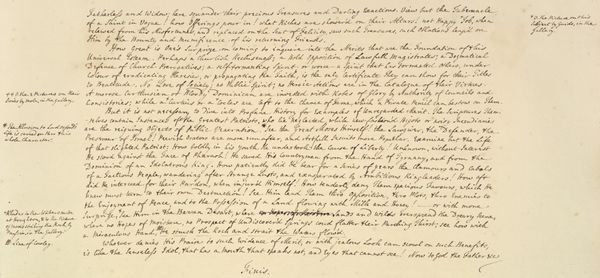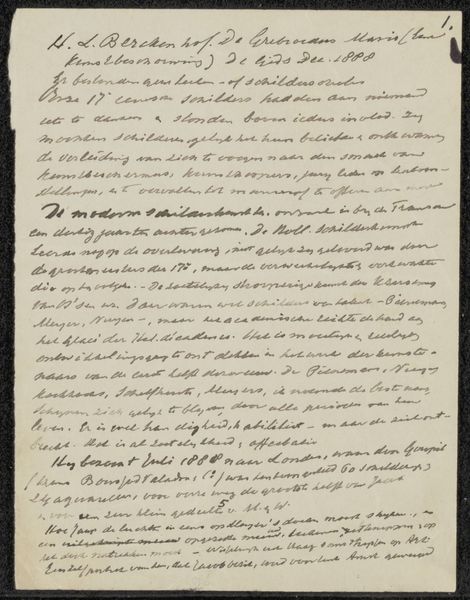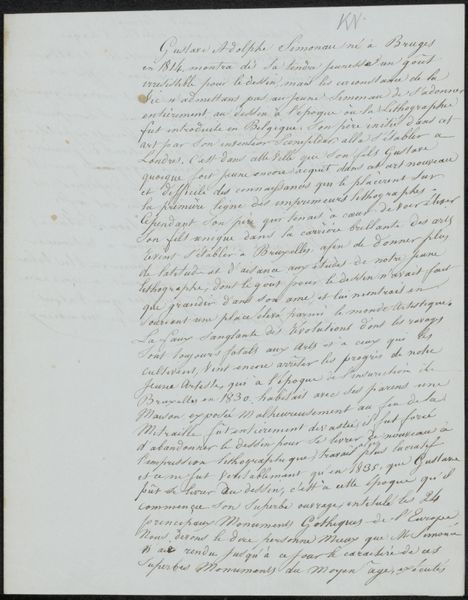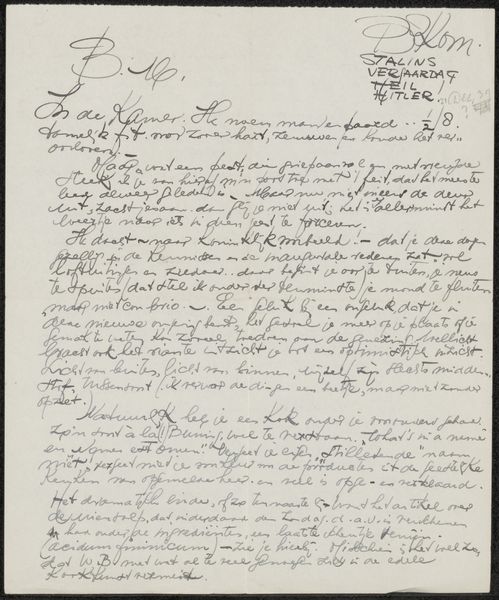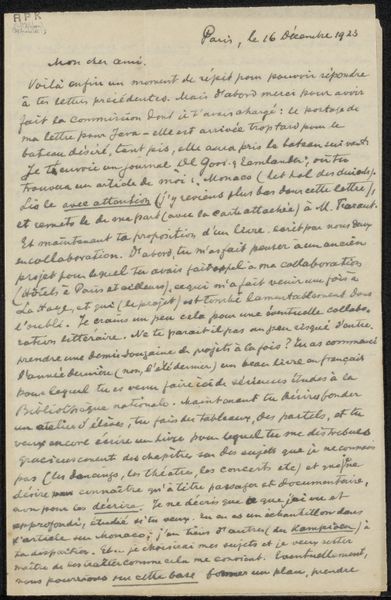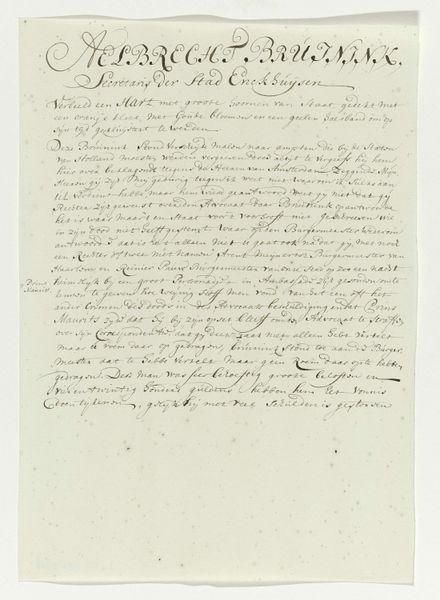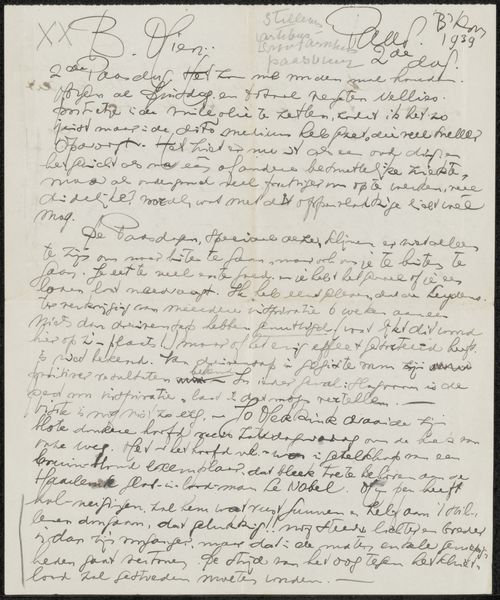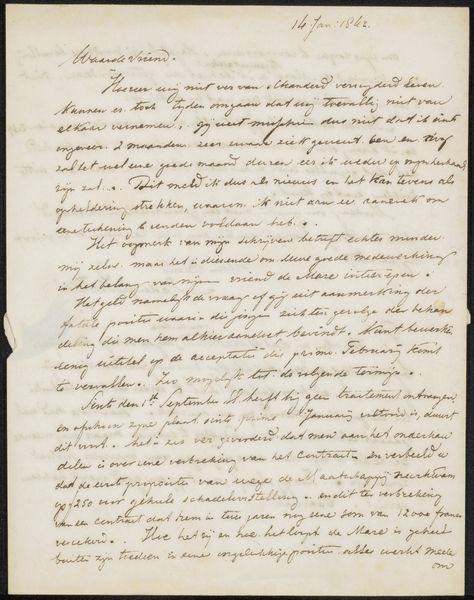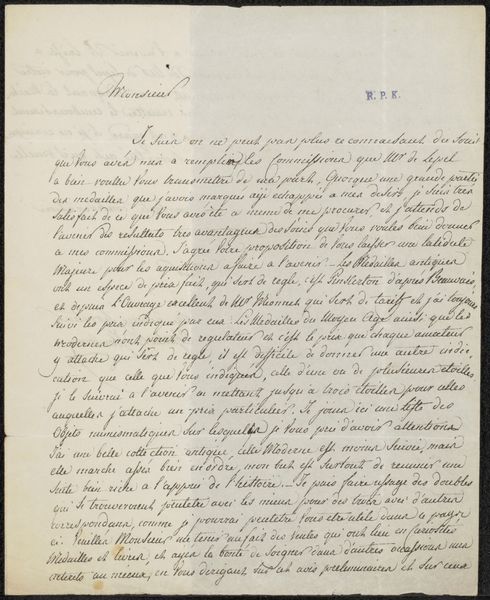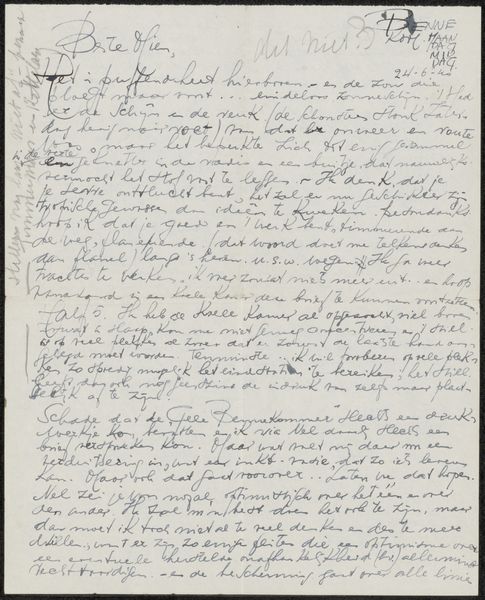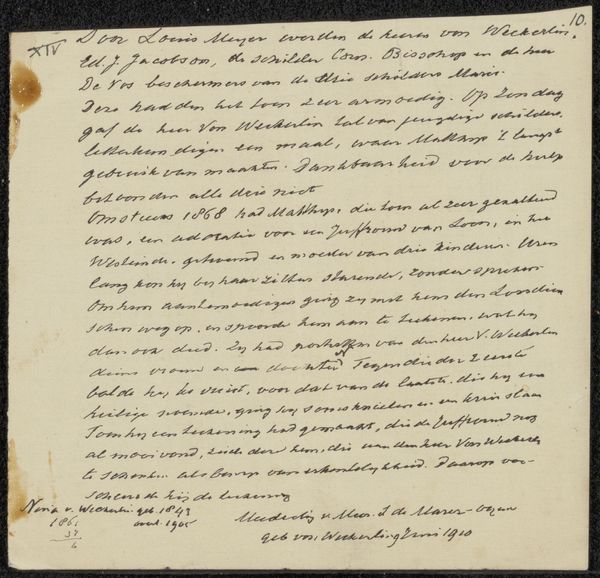
Transcripties van (delen van) brieven aan mevrouw Artz en aan Friedrich Gustav Julius Süs after 1905
0:00
0:00
drawing, mixed-media, textile, paper, ink
#
drawing
#
mixed-media
#
textile
#
paper
#
ink
#
calligraphy
Copyright: Rijks Museum: Open Domain
Curator: So, this piece is entitled 'Transcripties van (delen van) brieven aan mevrouw Artz en aan Friedrich Gustav Julius Süs' by Pieter Haverkorn van Rijsewijk, created after 1905. It appears to be a mixed-media work incorporating drawing, textile, paper, and ink with elements of calligraphy. What’s your initial impression? Editor: It strikes me as very intimate and personal, almost like peering into a private journal. The script is lovely but difficult to read, creating a sense of mystery. What do you see in this work? Curator: I see a complex dialogue between public and private spheres, questioning societal structures through personal correspondence. The choice of mixed media and calligraphy is quite deliberate, perhaps intended to subvert traditional artistic hierarchies, interweaving domestic craft with fine art. It hints at the political dynamics inherent in everyday communication. Editor: How so? The text looks almost like stream-of-consciousness writing. Curator: Precisely! By transcribing personal letters and combining them with artistic techniques, Haverkorn van Rijsewijk blurs the line between personal expression and political commentary. It implicitly challenges the traditional, often male-dominated, art world by elevating overlooked forms of communication traditionally associated with women. What impact do you think that has on the interpretation? Editor: That’s interesting; it recontextualizes personal experience as a form of resistance. By emphasizing the private voice, is the artist perhaps highlighting the importance of marginalized perspectives within the broader cultural conversation? Curator: Exactly. The materiality of the piece, particularly the incorporation of textile, furthers that argument by nodding to domestic labour and "feminine" crafts, effectively positioning them as valuable forms of artistic expression and socio-political commentary. Editor: This has broadened my perspective; I hadn’t initially considered how deeply this piece engages with issues of gender and societal norms. Curator: Indeed. Art often holds up a mirror to society, inviting us to question the power dynamics that shape our world.
Comments
No comments
Be the first to comment and join the conversation on the ultimate creative platform.
